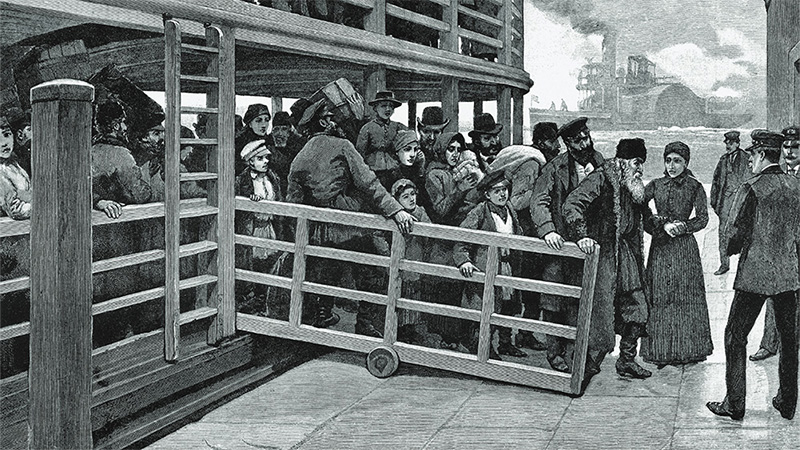Effects of Migration
Teacher Resources
Driving Question: How did migration impact both sending and receiving societies in this time period?
The long nineteenth century saw a massive wave of migration across the world, in part due to growing empires. Industrial cities grew rapidly, leading to a decline in many rural areas and straining city resources. Immigrants took new jobs, spread new ideas, sought political as well as social reforms, and diversified cultures.
Learning Objectives:
- Explain how and why new patterns of migration affected society from 1750 to 1900.
- Use close reading skills to consider the effect of human migratory patterns during this period.
Vocab Terms:
- abolition
- colonization
- decolonization
- migration
- realignment
Opener: Effects of Migration
To teach this lesson step, refer to page 3 of the Lesson 6.7 Teaching Guide.
Prompt parsing helps prepare students to write claims. Read more about our approaches to writing in the OER Project Writing Guide.
Practice your question-parsing skills by analyzing the LEQ prompt you’ll see in the next lesson.
Migration and Empire
To teach this lesson step, refer to page 3 of the Lesson 6.7 Teaching Guide.
You will examine the push and pull factors that affected migration around the world at the end of the nineteenth century as well as the early twentieth century.
-
Guiding Questions
-
Before you read
Preview the questions below, and then skim the article. Be sure to look at the section headings and any images.
While you read
Look for answers to these questions:
- What technologies helped to promote migration beginning around the end of the nineteenth century?
- What were some factors that prompted migration from Europe in the nineteenth century?
- How did the abolition of slavery shift patterns of migration to the Caribbean?
- What factors limited Asian settlement in Australasia and the Americas in the early twentieth century?
- Why did many people from the Caribbean move to Britain in the period after the Second World War?
- What factors led to mass migration of Japanese civilians to Manchuria, Taiwan, and Micronesia in the 1930s?
After you read
Respond to the following questions:
- To what extent does this article explain how various economic, social, and cultural factors contributed to the development of varied patterns of migration from 1750 to 1900?
- Do you think empire was an important factor in causing and shaping patterns of migration in this period? Why, or why not?
Source Collection: Migration
To teach this lesson step, refer to page 4 of the Lesson 6.7 Teaching Guide.
Looking for a fun twist to teach about migration patterns? Check out this thread in the Community Forum full of teacher ideas.
To get the most accurate depiction of how things were, we must go to the source. In this case, the primary sources on migration! We recommend you use the Quick-Sourcing Tool to complete this exercise.
Closer: Effects of Migration
To teach this lesson step, refer to page 5 of the Lesson 6.7 Teaching Guide.
To see where the AP themes show up throughout the course, you can reference the “Pieces” Themes Chart.
Now that you’re near the end of this unit, revisit the Themes Notebook. How has your thinking changed?




